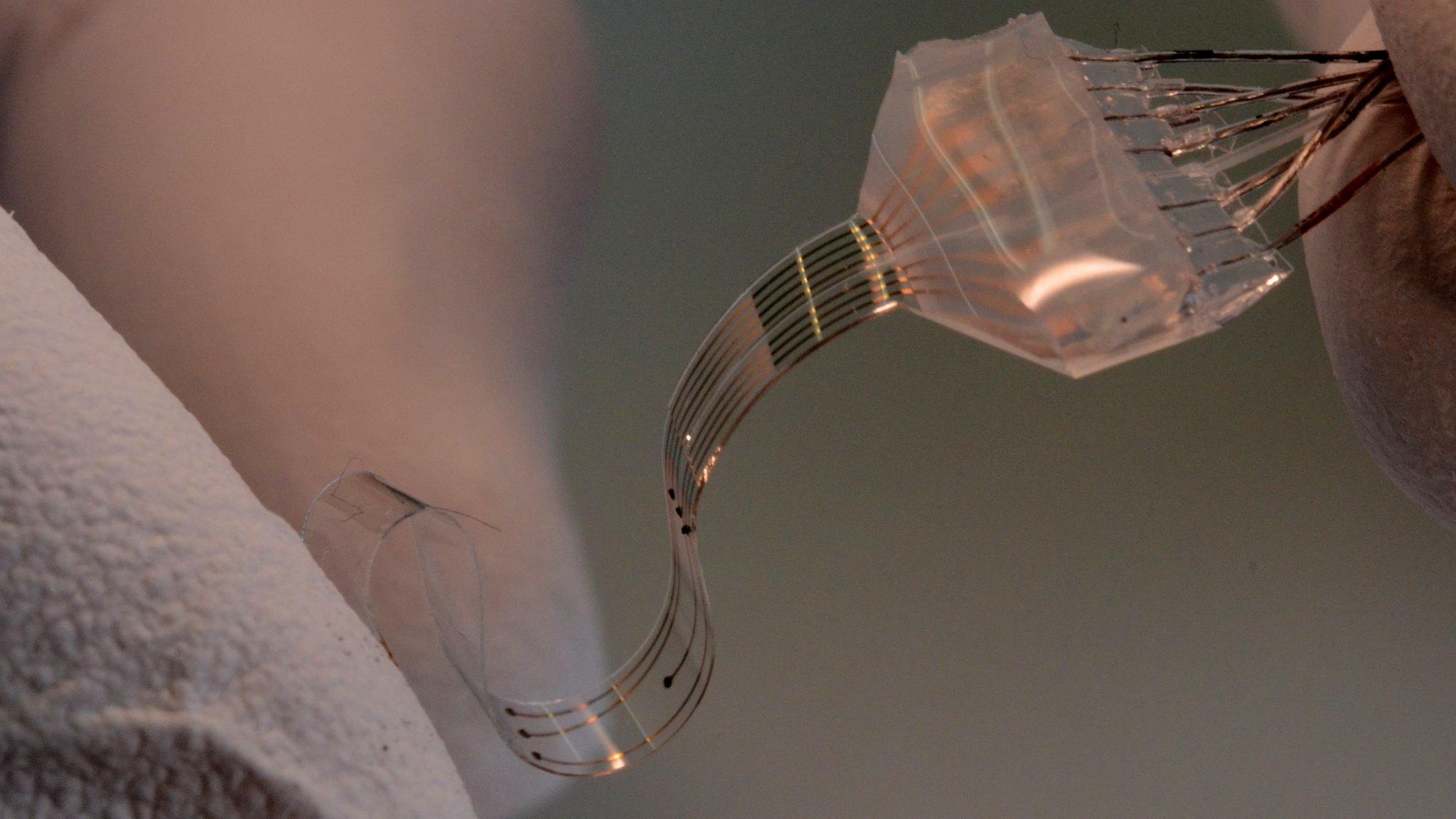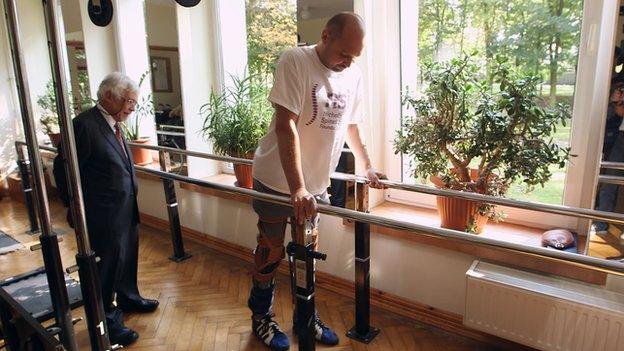Paralysed man moves legs using brain-reading device
- Published
Dr An Do: "He has the control of a general concept of walk or not walk"
A paralysed man has regained some control over his legs using a device that reads his brain, scientists say.
Brainwaves were interpreted by a computer, which then controlled the electrical stimulation of his leg muscles.
The US study, in the Journal of Neuroengineering and Rehabilitation, showed he was able to walk just under four metres with support.
Experts said maintaining balance was an issue that needed to be addressed.
A spinal cord injury prevents the flow of messages from the brain. However, the brain is still able to create messages and the legs are still capable of receiving them.
The researchers at the University of California, Irvine, used a brain-computer interface to bypass the damage in a man who had been paralysed for five years.
An electroencephalogram (EEG) cap read the activity of the man's brain and his initial training was to control a virtual person or avatar in a computer game.
'Interesting study'
Electrodes were then placed on leg muscles and the patient began training to move his own legs.
When he thinks of walking then the muscles are simulated to alternately move the right and left legs until he stops thinking about walking.
One of the researchers, Dr An Do, said: "We showed that you can restore intuitive, brain-controlled walking after a complete spinal cord injury.
"This non-invasive system for leg muscle stimulation is a promising method and is an advance of our current brain-controlled systems that use virtual reality or a robotic exoskeleton."
Dr Mark Bacon, from the charity Spinal Research, told the BBC: "This is an interesting early-stage study.
"What makes this interesting is the move out of the virtual realm by activating lower-limb muscles in a walking pattern.
"In that regard they have been successful. However, independent over-ground walking is still some way off, not least because the issue of maintaining balance hasn't yet been addressed."
- Published9 January 2015

- Published21 October 2014
